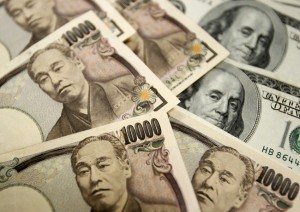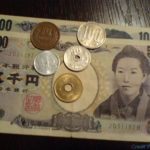 The yen fell against the US dollar as the Japanese economy slowed its growth in the third quarter.
The yen fell against the US dollar as the Japanese economy slowed its growth in the third quarter.
USD/JPY hit a session high at 103.18 at 08:18 GMT, gaining 0.31% on a daily basis. Support was likely to be received at December 6th low, 101.72, while resistance was to be encountered at December 3rd high, 103.38, the strongest since May 23rd.
The Japanese Cabinet Office reported that nations economy slowed its quarterly GDP to 0.3%, down from initial estimates of a 0.4% increase and short of second quarters increase of 0.5%. On annual basis, the economy slowed its growth in Q3 to an annualized 1.1%, defying analysts projections of 1.9% increase and down from the 3.6% expansion in the second quarter.
Meanwhile, according to a report by the Japanese Finance Ministry, the current account of the Asian country registered a deficit of 128 billion yen in October, the first shortfall since January, while analysts predicted a surplus of 160 billion yen. Septembers current account registered a surplus of 587 billion yen. The report on the seasonally adjusted current account didnt meet the analysts projections of 120 billion yen increase, registering a shortfall of 59 billion yen in October, while Septembers deficit figure stood at 125 billion yen.
However, the Economy Watchers Current Index rose to 53.5 in November, the highest since June, up from 51.5 in October and larger than the projected 52.3. The Economy Watchers Current Index measures the current mood of businesses that directly service consumers, such as barbers, taxi drivers, and waiters. The data is compiled from a survey of about 2 000 employees. A reading above 50.0 indicates optimism, while a value below 50.0 indicates pessimism.
BoJ Governor Haruhiko Kuroda said last week in the city of Nagoya that the central bank will continue its loose monetary policy until the 2% inflation rate becomes stable and will monitor the impact of the yen’s correction on small companies.
Japan is in a process of recovery after the 15-year period of deflation. Bank of Japan has been purchasing more than 7 trillion JPY (68.4 billion USD) of government bonds each month in its struggle to achieve 2% inflation in two years since April.
A report by JP Morgan, cited by Bloomberg, predicts that the BoJ Governor Kuroda will expand the bond-purchasing program form the current pace of 7 trillion yen a month to 10 trillion yen for the 12 months ending March 31st, 2015, at the BoJs April 30 meeting. A Bloomberg News poll in October showed that the majority (19 economists) expect the BoJ to add stimulus in the second quarter, with only seven saying that the central bank will ease its stimulus during the same period.
Meanwhile, last Friday a number of economic indicators were released showing that US economy is strengthening at a faster-than-expected pace.
U.S. employers added more jobs last month than projected. Non-farm payrolls jumped to 203 000, confounding expectations of a lesser number of jobs, 183 000, while in October the job number has been downwardly revised to 200 000. The progress in the labor market will probably provide a spark for the US economy, analysts expected.
The recovering labor market led to improving sentiment and higher spending, despite a 0.1% decline in household income. Household spending, which accounts for 70% of the economy, rose by 0.3% in October, beating both projections and last month’s increase of 0.2%.
US average hourly earnings increased to 0.2% in November from the previous month to reach $24.15, a 2% yearly increase. Average weekly hours for all workers also increased, from 34.4 in October to 34.5 in November.
Core personal consumption expenditures (PCE) met analysts projections on both monthly and annual basis, jumping by 0.1% and 1.1% in October, respectively.
Investors awaited the statement of the President of Federal Reserve Bank of St. Louis, James Bullard.
Elsewhere, AUD/USD slipped to a session low at 0.9074 at 7:25 GMT, after which consolidation followed at 0.9079, losing 0.27% for the day. Support was likely to be received at December 3rd low, 0.9058, while resistance was to be encountered at December 3rd high, 0.9146.





